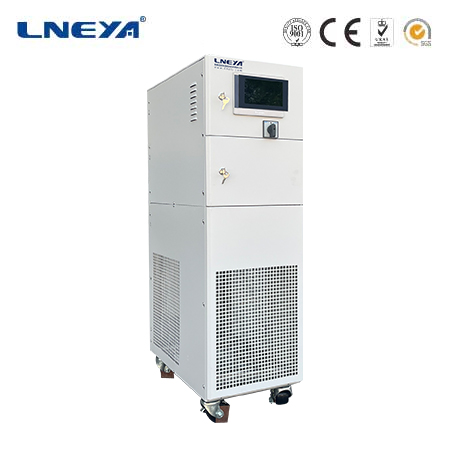climatic chamber test
Climatic Chamber Test: A Comprehensive Overview
Climatic chamber tests play a pivotal role in modern engineering, manufacturing, and research. These tests provide valuable insights into how products, materials, and components perform under diverse environmental conditions, helping to ensure their reliability, durability, and safety in real – world scenarios.

Definition and Purpose
A climatic chamber, also known as an environmental test chamber, is an enclosed space designed to simulate a wide range of environmental conditions. Climatic chamber tests involve subjecting specimens (which can be products, materials, or components) to these controlled conditions to evaluate their performance, stability, and durability.
The main purpose of climatic chamber tests is to predict how a product will behave in different environments it may encounter during its lifecycle. By simulating extreme or typical environmental conditions in a controlled laboratory setting, manufacturers and researchers can identify potential weaknesses or failure points in the design or materials. This allows for improvements to be made before the product is released into the market, reducing the risk of product failures, recalls, and associated costs. Additionally, climatic chamber tests help ensure compliance with various national and international standards and regulations related to product performance and safety.
Key Environmental Factors Simulated
Temperature
Temperature is one of the most fundamental factors simulated in climatic chamber tests. Chambers can be set to a wide range of temperatures, from extremely low values close to cryogenic temperatures (e.g., -70°C) to high temperatures exceeding 150°C. Temperature tests can be conducted as isothermal (constant temperature) tests, where the specimen is held at a single temperature for a specified period, or as temperature – cycling tests. In temperature – cycling tests, the temperature inside the chamber is repeatedly varied between predefined high and low values to mimic the thermal stress a product may experience in different seasons or during transportation.
Humidity
Humidity levels can also be precisely controlled within climatic chambers. Relative humidity (RH) values can range from very low (e.g., 10% RH) to high (up to 98% RH or more). High – humidity environments can simulate tropical or rainy conditions, which can cause issues such as corrosion, mold growth, and degradation of materials. Low – humidity conditions can test the brittleness and drying – out of certain materials. Humidity – temperature combination tests are common, as many real – world environments involve both temperature and humidity variations simultaneously.
Altitude
For products that operate at different altitudes, such as aerospace components, automotive parts for high – altitude regions, or outdoor equipment, altitude simulation is an important aspect of climatic chamber testing. By reducing the air pressure inside the chamber, the effects of low – pressure environments can be replicated. This helps assess how products perform under conditions where there is less oxygen, lower air density, and potential changes in thermal conductivity.
Solar Radiation
Some climatic chambers are equipped with solar simulation capabilities. These chambers use special lamps or light sources to mimic the intensity and spectral distribution of sunlight. Solar radiation testing is crucial for products that are exposed to outdoor conditions, such as building materials, automotive exteriors, and outdoor electronics. It helps evaluate the impact of UV radiation on material degradation, color fading, and the overall structural integrity of the product over time.

Other Factors
In addition to the above – mentioned factors, some advanced climatic chambers can also simulate other environmental conditions, such as vibration, dust, and salt fog. Vibration tests are combined with climatic conditions to mimic the stress products experience during transportation. Dust tests assess the ingress protection of products in dusty environments, while salt fog tests simulate coastal or marine environments to evaluate the corrosion resistance of materials and components.
Types of Climatic Chamber Tests
Temperature – Humidity Cycling Tests
This is one of the most common types of climatic chamber tests. It involves subjecting the specimen to a series of temperature and humidity cycles. For example, the chamber may start at a low temperature and low humidity, then gradually increase the temperature and humidity to a high level, hold it for a certain period, and then reverse the process. These cycles can be repeated multiple times to simulate long – term environmental exposure. Temperature – humidity cycling tests are used to evaluate the performance of products in environments with changing seasons or in regions with fluctuating weather conditions.
Thermal Shock Tests
Thermal shock tests subject specimens to rapid and extreme temperature changes. The specimen is quickly transferred between two chambers with significantly different temperatures (e.g., from -40°C to 125°C within seconds). This sudden temperature change creates thermal stress within the material or product, which can reveal weaknesses such as cracks, delamination, or component failures. Thermal shock tests are particularly important for products that may experience sudden temperature shifts during operation or transportation, like aerospace components and high – performance electronics.
Altitude Simulation Tests
As mentioned earlier, altitude simulation tests involve reducing the air pressure inside the chamber to mimic different altitudes. The test may also combine altitude changes with temperature and humidity variations. These tests are essential for ensuring that products such as aircraft parts, avionics systems, and outdoor equipment function properly at high altitudes where the environmental conditions are harsh.
Long – Term Exposure Tests
Long – term exposure tests are conducted over extended periods, sometimes lasting weeks, months, or even years. The specimen is placed in the climatic chamber under specific environmental conditions that represent the expected service environment of the product. This type of test helps assess the long – term degradation, aging, and fatigue of materials and products. For example, in the pharmaceutical industry, long – term exposure tests are used to determine the shelf life of drugs by subjecting them to different temperature and humidity conditions.
Test Process
Test Planning
The first step in a climatic chamber test is careful planning. This involves defining the test objectives, determining the appropriate test standards or specifications to follow, and selecting the relevant environmental factors and test parameters. For example, if testing an electronic device for outdoor use, the test plan may include temperature – humidity cycling, solar radiation exposure, and dust ingress tests. The test plan also specifies the duration of each test phase, the number of cycles (if applicable), and the acceptance criteria for the specimen.
Specimen Preparation
Once the test plan is finalized, the specimens are prepared. This may involve cleaning the specimens, installing sensors (if required to monitor internal conditions during the test), and ensuring that they are properly mounted or positioned within the chamber. For complex products, additional preparations such as disconnecting non – essential components or applying protective coatings may be necessary.

Chamber Setup
The climatic chamber is then set up according to the test plan. This includes programming the temperature, humidity, pressure (for altitude simulation), and other relevant parameters. The chamber’s control system is calibrated to ensure accurate and consistent environmental conditions throughout the test. Before placing the specimens in the chamber, a pre – test run may be conducted to verify that the chamber is functioning properly.
Test Execution
The specimens are placed inside the chamber, and the test is initiated. During the test, the chamber’s monitoring systems continuously record the environmental conditions inside the chamber as well as any data from the sensors attached to the specimens (such as temperature, strain, or electrical performance). The test is carried out according to the predefined test plan, and any anomalies or unexpected events are noted.
Data Collection and Analysis
After the test is completed, data from the chamber’s monitoring systems and specimen sensors are collected. This data is then analyzed to evaluate the performance of the specimens. Statistical methods may be used to interpret the data and determine if the specimens have met the acceptance criteria defined in the test plan. If the specimens fail to meet the criteria, further analysis is conducted to identify the root cause of the failure, which can guide design improvements or material changes.
Applications across Industries
Aerospace Industry
In the aerospace sector, climatic chamber tests are indispensable. Components such as aircraft engines, avionics systems, and structural materials need to withstand extreme temperature variations, low pressures at high altitudes, and exposure to solar radiation. These tests ensure that the equipment remains reliable and safe during flight, reducing the risk of in – flight failures that could have catastrophic consequences.
Automotive Industry
Automotive manufacturers use climatic chamber tests to evaluate the performance of vehicles and their components. Tests simulate various driving conditions, from cold winter climates to hot desert environments. They assess factors such as the durability of the vehicle’s exterior, the functionality of electronic systems, and the performance of engines and batteries under different environmental conditions. This helps in designing vehicles that are reliable and perform well in diverse geographical regions.
Electronics Industry
Electronics products, ranging from smartphones to industrial control systems, are tested in climatic chambers. The miniaturization of electronics makes them more susceptible to environmental factors. Temperature – humidity cycling tests can reveal issues such as moisture ingress, which can damage sensitive components. Thermal shock tests help identify weaknesses in the soldering and packaging of electronic devices. These tests ensure that electronics products are robust and can operate reliably in different environments.
Pharmaceutical Industry
In the pharmaceutical field, climatic chamber tests are used to determine the stability and shelf life of drugs. Drugs are subjected to different temperature and humidity conditions to simulate storage and transportation scenarios. By monitoring the chemical and physical properties of the drugs over time, manufacturers can establish appropriate storage conditions and expiration dates, ensuring the safety and efficacy of the medications.
Construction and Building Materials Industry
Building materials such as paints, insulation materials, and roofing tiles are tested in climatic chambers. Solar radiation tests assess the color – fading and degradation of paints, while temperature – humidity cycling tests evaluate the durability and performance of insulation materials. These tests help in selecting materials that can withstand the environmental conditions of different climates and ensure the long – term integrity of buildings.
Standards and Regulations
There are numerous national and international standards and regulations related to climatic chamber testing. For example, in the automotive industry, standards such as ISO 16750 (Road vehicles – Environmental conditions and testing for electrical and electronic equipment) provide guidelines for environmental testing of automotive electronics. In the aerospace sector, standards like RTCA DO – 160 (Environmental Conditions and Test Procedures for Airborne Equipment) define the environmental test requirements for airborne equipment. Adhering to these standards ensures that test results are comparable and that products meet the minimum performance and safety requirements across different manufacturers and regions.
In conclusion, climatic chamber tests are an essential part of product development and quality assurance across multiple industries. By simulating a wide range of environmental conditions, these tests help ensure that products are reliable, durable, and safe, meeting the demands of consumers and regulatory requirements. Understanding the principles, types, processes, and applications of climatic chamber tests is crucial for engineers, researchers, and manufacturers to produce high – quality products in an increasingly competitive global market.
Related recommendations
industrial water cooler manufacturers
479Industrial Water Cooler Manufacturers: Driving Efficiency in Temperature ControlIndustrial water cooler manufacturers play a critical role in providing reliable and efficient cooling solutions for...
View detailschiller system working
404Understanding the Working of Chiller Systems Chiller systems are an essential part of modern heating, ventilation, and air conditioning (HVAC) infrastructure, providing cooling to commercial bu...
View detailsheater lab
456Laboratory Heaters: Types, Applications, and Safety Laboratory heaters are essential for maintaining precise temperature control in various scientific applications. They are used for a wide ran...
View details60 ton air cooled chiller
65460 Ton Air-Cooled Chiller: Medium-Scale Cooling Solutions for Commercial and Industrial Applications A 60-ton air-cooled chiller is an essential piece of HVAC equipment capable of managing sign...
View details
 LNEYA Thermal Test Chillers
LNEYA Thermal Test Chillers






HelloPlease log in